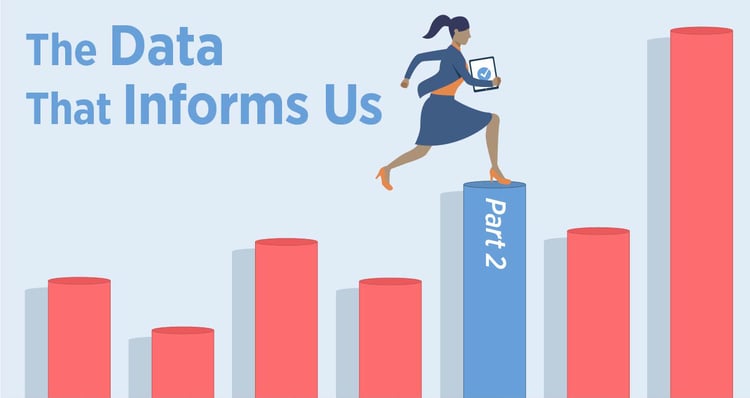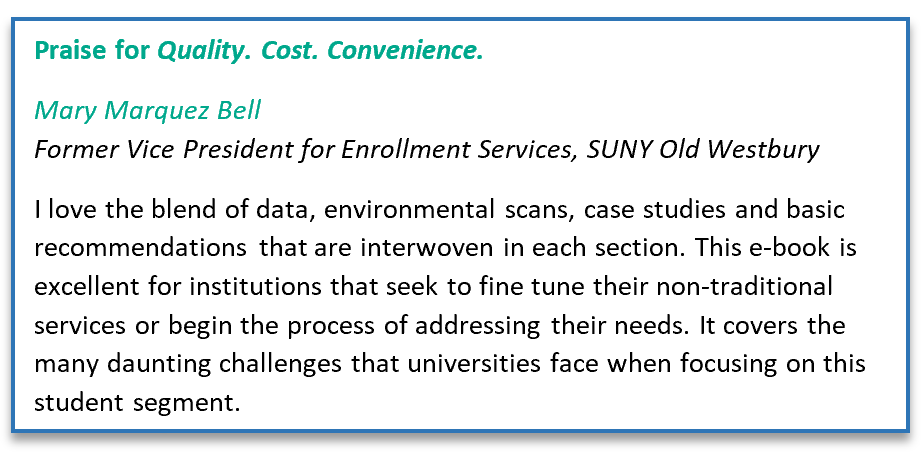
In last week’s post we shared the findings from the National Student Clearinghouse Research Center’s latest report on summer enrollment numbers.
We also made a prediction — that the typical recession uptick in people trying to upskill will look a little different this time around. Remember that large drop off in summer community college enrollments we saw in the NSCRC data?
Yes, there will be market demand for new skills as the economic effects of the pandemic persist, but with the job market drastically altered by a new reality of virtual work and the decimation of roles (retail, restaurants, tourism) in the service industry, specific programs will have outsized interest in a way that we’ve never seen before.
In Part 2 of our data-focused series, we turn our focus to one of our favorite topics: non-traditional students. Or more specifically, the pool of 36 million individuals in the US who have some college, but no degree (SCND, as defined by the National Student Clearinghouse Research Center.)
We wrote the book on this back in 2018. Literally. (Don’t worry, a free copy of our non-traditional student eBook, complete with strategy recommendations and case studies from your peers is available for download below.)
This is an audience of 36 million potential students that is yours for the taking if you’re ready to get to work. And if you know how to recruit them. It gets a bit tricky as they are not all 18 years old and following a standard pathway from high school to college. Hence the term non-traditional. Our point: they are harder to target en masse.
And although their rate of enrollment during the pandemic is not yet clear, we have some predictions on how this is going to play out.
Read on to learn who these students are, what they’re looking for in the COVID-era, and what this means for your marketing.
Before we dive in, download your copy of our non-traditional student eBook, Quality. Cost. Convenience. complete with case studies from nine of your peer institutions. And if you’re an Intead Plus member, there’s an extended edition with three bonus chapters of strategic recommendations, marketing plans, and student personas available to you.
Despite the dramatic shifts in the educational landscape wrought by COVID-19, we still stand by our approach and recommendations from 2018. Today’s post will help you narrow the focus a bit to prioritize your resources in the new pandemic reality.
Now on to the data.
Who Are These Students?
Out of this pool of 36 million potential students, there is one particular segment to keep your eye on — Potential Completers, defined by the National Student Clearinghouse Research Center as those most likely to re-enroll. According to the 2019 NSCRC report, “Potential completers are the most relevant subgroup for institutions looking to increase enrollments today, as well as for policy makers looking to reach state and national postsecondary-attainment goals tomorrow.” Or for institutions trying to make up pandemic enrollment losses.
These Potential Completers make up 10% of the total pool (3.6 million prospects) and have completed at least two years of full-time enrollment between 2008 and 2018. We’ve talked about them here on the blog before, but for a quick refresher:
- They re-enroll at a rate of 24%, versus the 9% of those who completed only a single term
- 58% are under 30
- 51% are women
- 47% are racial/ethnic minorities
- 53% first enrolled in community college
- 4 years since (median) last enrollment
A recent Public Viewpoint poll conducted by Strada's Center for Consumer Insights reported that 42% of "aspiring adult learners" (25-44 years old, without a college degree) say that COVID-19 has made them more likely to enroll in additional education programs. However, the pandemic has made these learners less sure that additional education is worth the cost (59% saying it would be worth it vs. 77% pre-pandemic).
In short: you and your marketing have some convincing to do. (Hint: Our e-book research points the way.)
What Are they Looking For?
Typically, when we consider the non-traditional student market and their educational decision-making, three key factors rise to the top: quality, cost, and convenience (it’s the title of our eBook after all).
If anything, this pandemic has made all three of these factors even more influential. Quality
Quality
For this market, quality = employment outcomes and a program that is focused on their objectives in their desired fields. And those desired fields are changing. Rapidly.
From a survey conducted by McKinsey Global Institute back in 2017, it was estimated that as many as 375 million workers (14% of the global workforce) will have to switch occupations or acquire new skills by 2030 because of automation and artificial intelligence. That was even before most people had even heard of Zoom.
Flash forward to a February 2020 McKinsey Global survey of over 1,000 companies:
- 87% of respondents report existing or anticipated skill gaps at their organizations within the next five years.
- 41% of respondents report that 11-25% of their organization’s current roles are at risk of being disrupted by market or technology trends in the next 5 years.
- The business areas with the greatest need to address skill gaps include:
- 43% — Data analytics
- 26% — IT, mobile, and/or web design and management
- 25% — Executive management
- 23% — HR and talent management
- 22% — Sales and marketing operations
- 22% — Product and/or service design
What this means for your marketing: You should be prepping those tech-focused digital marketing campaigns right about now. And by right now, we mean six months ago.
With major market skill gaps and the pandemic further accelerating a shift to remote work, tech programs in fields such as data analytics, web design, and cybersecurity are where you can capture the lion’s share of the incoming post-pandemic upskill market. We anticipate healthcare professions also seeking skilled workers.
If your institution’s strength doesn’t lie in these programs, consider how you can focus on career outcomes in tech- and health-related fields (IT support services, radiation technician) and related roles through your marketing. Or start developing those data science and health programs, stat.
A word of caution here: deliver on your promises of quality or this effort will last 12 months and fizzle out as social media posts from your disappointed students crush your marketing program.
Cost
Not to belabor a point here, but money really matters. See our past posts for the latest data regarding the importance of financial aid to undergraduates and students’ perceived value of virtual vs. on-campus learning. The bottom line: students need to believe that your program will provide a good return on investment. Your messaging needs to be convincing and real. Consider the types of financing plans you can offer.
Convenience
Be sure you are thinking short-term, quick hit certificates that resonate with employers and get non-traditional students into their next, and better, positions as fast as possible.
Part-time options, flexibility in terms of length of time to degree or certificate completion, virtual and flexible faculty office hours and student support, a variety of class times — these have always been priorities for this audience segment.
A return to higher education is never easy, but with some schools remote and day cares closed, it will make it even more difficult for the parents in this non-traditional segment considering a return to higher education to complete their degree in the near term. The easier you make things for them, the more they will seriously consider and then enroll in the option. (Did we mention day care? Offer it in a safe way, right now, and this cohort will love you forever!)
You know that confounding 5.6% drop in community college enrollments in the May-July months we mentioned last week? Less confounding when we consider the scheduling, practical, and home life obstacles that likely got in the way of the immediate need to upskill this year.
What this means for your marketing: As a silver-lining to the new reality of remote work and virtual learning (at least once the dust settles) is that you are now (hopefully) better equipped to provide non-traditional students with the virtual and flexible learning environments that they have always sought, even pre-COVID. And it may be easier for your student services team to flex their hours and provide virtual support from 6-11pm on weeknights and some weekend hours, too.
Where you may be struggling to convey the value of your virtual programs to traditional students, non-traditional students will be ready to listen —but make it easy for them. Be clear and concise in messaging about course scheduling options, program offerings, and the application process. Tell them about your employer connections and student success stories. Know that most will need some hand holding and encouragement to re-enter the classroom (online or in person). Your front line staff need to understand where these students are coming from.
Become an Intead Plus member to access the extended edition of our non-traditional student eBook for an easy to read, deep dive into non-traditional student personas, market segmentation, and detailed enrollment marketing recommendations, including the best channels to distribute your messaging.
When you’re ready to reach this pool of 36 million students, give us a call. We’ll drive enrollment with the targeted, engaging digital campaign you are looking for. And the Intead team will track it end-to-end to maintain that essential, continuous improvement process to scale your growth from one term to the next.



